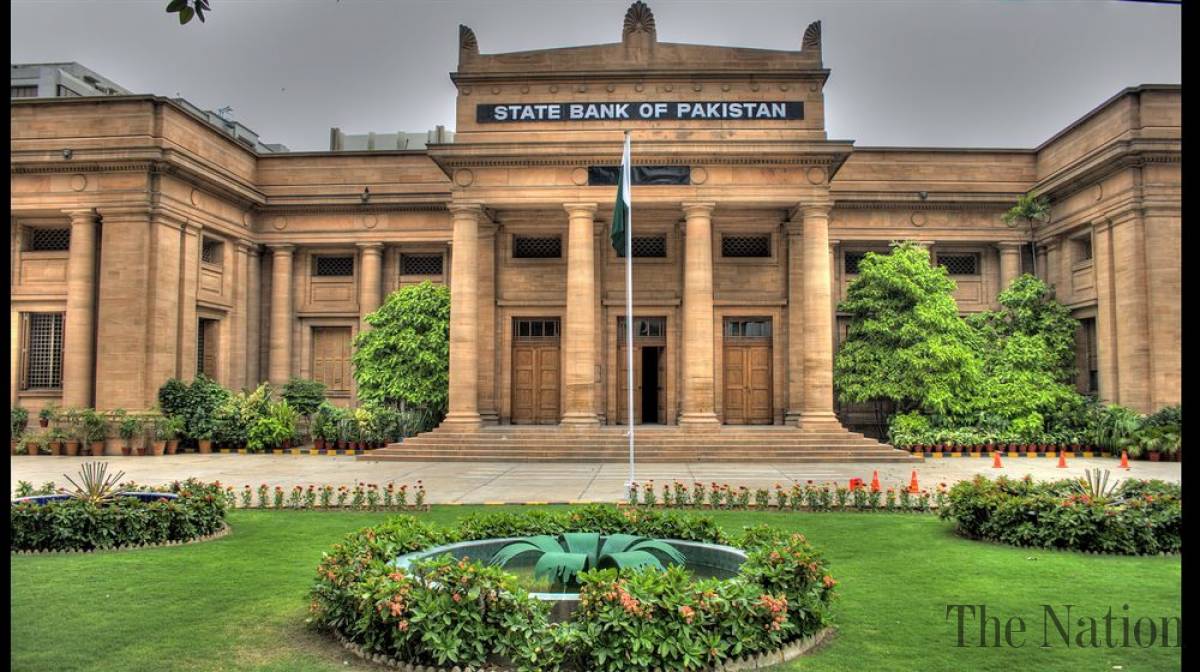Pakistan is yet again gripped by uncertainty over the exchange rate of the Pakistani currency vis-à-vis the US dollar. Businessmen and the social media users are exchanging arguments for and against further devaluation of rupee while the speculators are busy anticipating increase in value of dollars to around 200 rupees by December 2021.
As of early September 2021, dollar-rupee exchange rate was fluctuating around 168 rupees in the inter-bank and 169 rupees in the open market. A few months ago, it was around 150 to 152 in the inter-bank and open market.
But dollar started gaining value because of sudden surge in imports and the trade deficit of Pakistan. For example, in August 2021, our monthly imports mounted to USD 6 billion, from USD 3 billion the same month a year ago.
In other words, most of importers are buying the foreign exchange from the open market and banks, consequently, value of the US dollar and other major currencies is constantly surging.
During PTI era, more or less 30 percent devaluation of rupee has shrunk our gross domestic product (GDP) by that much. In simple words, we have lost 30 percent of the GDP just because depreciation of rupee value while the burden of foreign loans also surged equally as the government printed more rupees to pay to people.
Moreover, the foreign trade data of Pakistan for the first two months of fiscal year 2021-22, shows an alarming situation which is strengthening speculation about further increase in value of dollar in weeks and months ahead.
For instance, Pakistan’s trade deficit mounted to USD 7.16 billion in first two months of FY22 as imports surged to record USD 11.74 billion level in July-August. Exports in these two months amounted to 4.58 billion dollars only, leading to an alarming trade imbalance worth USD 7.16 billion.
In simple words, the trade deficit has eliminated the impact of entire inflows of remittances for July-August 2021 and IMF loan of USD 2.8 billion, which Pakistan received on 23 August 2021.
August 2021, the second month of the current financial year, witnessed a staggering 133 percent growth in trade deficit driven largely by a doubling of imports – to USD 6.3 billion as against USD 3.32 billion in same month last year.
If the current foreign trade trend persists throughout the fiscal year 2021-22, Pakistan will be spending more or less USD 65 billion on imports against expected exports of USD 29 billion, leaving a gap of USD 36 billion.
This widening gap between imports and exports would consistently drive up the value of US dollar in the inter-bank and open market operations in 2021-22, causing more trouble for consumers, importers, and foreign investors.
The current account deficit of Pakistan expanded to USD 2.2 billion in first two months of the ongoing financial year against USD 800 million surplus during the corresponding months of previous fiscal mainly because of an unexpected and a wide gap in imports and exports.
This trend also indicates that the current account deficit, if not contained in remaining period of FY22, will settle around USD 18 to USD 20 billion.
Possible impact of Dollar demand in Afghanistan
Finance Minister Shoukat Tarin said on 9 September 2021 that Afghanistan was facing shortage of US dollars. From his statement, it becomes clear that dollars will be smuggled from Pakistan to Afghanistan, an unexpected situation that will further undermine the value of Pakistani currency in the days ahead.
The State Bank of Pakistan and the PTI government must keep these factors in mind if they want to see a moderate dollar-rupee exchange rate in the ongoing fiscal year.
Impact of devaluation as per economic theory
Economic theory tells us that the efficacy of devaluation depends on the competing effects of demand and supply side impact of the exchange rate.
On the demand side, exchange rate seemed to have a positive effect as depreciation increases competitiveness and increases exports. On the other hand, it may cause an increase in the interest rate, cost of raw materials, imported products and have a negative impact on investment and growth.
On the supply side, depreciation has negative effects as the companies operating in Pakistan make price adjustment in the backdrop of depreciation of rupee and increased cost of imported goods.
Empirical evidence suggests that there is no correct method to measure equilibrium exchange rate. Trading basket’s weighted exchange rate is different from competing countries weighted exchange rate.
Another important aspect associated with devaluation is that how we use the current account deficit and capital and financial accounts together. If we believe that the rupee depreciates further in 2021 then what would be the consequences?
Some of the Pakistani products that are unable to compete in the international markets at the current exchange rate of PKR 168 would be able to benefit as each dollar would now yield more rupees and manufacturers and exporters will be able to cover their costs and make profit.
Devaluation and trajectory of exports
For instance, when the PTI came to power in August 2018, the dollar-rupee exchange rate was around 118 rupees. Today it is fluctuating around 168 to 169 rupees. In simple words, exporters are getting more rupees against each dollar while importers and consumers are paying much more than before.
It is general perception that devaluation brings additional export revenues to the country. But the past exports record shows that devaluation rarely benefits our exports sector.
For example, our exports are stuck up around USD 24 billion to USD 25 billion a year since 2013-14. The PPP government handed-over about PKR 96 exchange rate to PML-N government in 2013 which increased dollar-rupee exchange rate to around 117-118 rupees.
During the PPP, PML-N terms and till August 2021 (PTI government since August 2018), there is not much difference in our exports despite the fact that dollar-rupee exchange rate has increased to 168 rupees
The rupee may continue to slide against dollar amid rising imports and trade deficit as the State Bank and the PTI government are indifferent to rupee value due to their deal with the IMF.
However, some of the Pakistani industries would be in a better position to make profit through import substitution as the prices of competing imported goods go up which discourage consumption of imported items.
Devaluation and remittances
Meanwhile, workers’ remittances that are at present diverted to informal money changers are being sent through legal channels such as Roshan Digital Account initiated by the PTI government in Sept 2020 and other available banking channels. This is evident from increase in remittances to USD 29.4 billion in 2020-21 as compared to USD 25 billion in 2019-2020.
Pakistanis receiving foreign currency remittances are getting more rupees in the wake of devaluation of rupee.
For instance, before the formation of PTI government, Pakistanis were receiving 117 to 118 rupees against every dollar that they were getting from their family members or friends, living abroad.
However, the devaluation during three years of PTI government has increased dollar-rupee exchange rate close to 170 rupees which means countrymen receiving foreign exchange remittances are pocketing more money.
Same is the case of exporters who are earning much more rupees during the PTI government era in comparison with PML-N and PPP eras.
Exchange rate expectations
In Pakistan, exchange rate expectations have no rational basis and people follow the bandwagon effect in the wake of discrete devaluation, foreseeing further depreciation in the near future amid growing speculations by market forces.
If the effect of devaluation on the balance of payments is either neutral or negative while the foreign exchange reserves of Pakistan are not maintained at a reasonable level (at least equal to six months imports), the bandwagon expectations occur.
In such a situation, Pakistani exporters withhold their supply of dollars to get a better rate after 90 days, the maximum time allowed to exporters to surrender their forex earned through exports.
Meanwhile, importers tend buy dollars well ahead of time amid anticipation of further depreciation of rupee. In such a scenario, the foreign exchange market in Pakistan would, indeed, experience shortage of dollars, leading to increase in demand and value of dollar.
Cost of raw materials and inputs
It is believed that more or less 40 percent of Pakistani exporters use imported raw materials, including fuel, LNG, etc. Thus, the cost of this 40 percent inputs increased after devaluation and their gain from depreciation of rupee would be limited.
At the same time, the prices of imported goods will rise, triggering inflation which will badly affect the deprived segments of the society. Also, the profits of foreign investors would decline, a development that will discourage them to line up more investment in Pakistan.
Former Governor State Bank Dr Ishrat Hussain wrote an article on devaluation and its pros and cons in which he pointed out that during 2002-07, the dollar traded in a narrow range of about 60 rupees and exports doubled during this time. In the following five years, the rupee depreciated by 51 percent, but there was no corresponding increase in the value of exports.
In the earlier period, inflation relative to trading partners was quite low and fiscal deficit was under control. In the latter period, inflation reached its peak of 23 percent and fiscal deficit widened to 8 percent of GDP.
Dr Ishrat observed that the lesson to be drawn from this historical evidence is that sound fiscal and monetary policies are critical to macroeconomic stability. The need for exchange rate depreciation in that event does not arise.
To rely solely upon a blunt instrument such as exchange rate while other policies are moving in the opposite direction would prove harmful to the economy.
Markets are based on sentiments and it is essential to maintain the confidence of market players by avoiding the circumstances that form the bandwagon expectations leading to pressure on exchange rate and depletion of reserves.
In fact, the economic management involves tough policy making and every policy creates a class of winners and losers. It is up to the PTI government’s economic policymakers to keep value of rupee stable without putting more burden on the consumers and importers through further depreciation.










